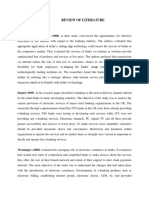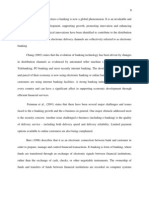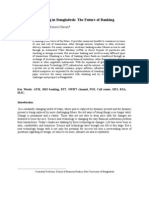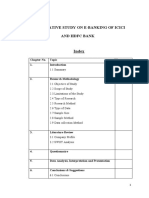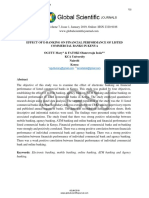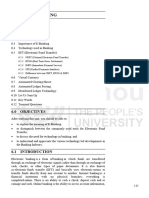0% found this document useful (0 votes)
19 views11 pagesChapter 2
The document discusses various contemporary banking theories, including the importance of electronic banking in enhancing financial performance and reducing transaction costs. It outlines the advantages of e-banking, such as cost reduction, convenience for customers, and easier expansion for banks, while also detailing different types of electronic banking services like ATMs, mobile banking, and internet banking. Additionally, it highlights the current state of electronic banking in Ethiopia, noting its infancy and the challenges faced in implementing technology-based banking services.
Uploaded by
ermiyase shewangaCopyright
© © All Rights Reserved
We take content rights seriously. If you suspect this is your content, claim it here.
Available Formats
Download as DOCX, PDF, TXT or read online on Scribd
0% found this document useful (0 votes)
19 views11 pagesChapter 2
The document discusses various contemporary banking theories, including the importance of electronic banking in enhancing financial performance and reducing transaction costs. It outlines the advantages of e-banking, such as cost reduction, convenience for customers, and easier expansion for banks, while also detailing different types of electronic banking services like ATMs, mobile banking, and internet banking. Additionally, it highlights the current state of electronic banking in Ethiopia, noting its infancy and the challenges faced in implementing technology-based banking services.
Uploaded by
ermiyase shewangaCopyright
© © All Rights Reserved
We take content rights seriously. If you suspect this is your content, claim it here.
Available Formats
Download as DOCX, PDF, TXT or read online on Scribd
/ 11

